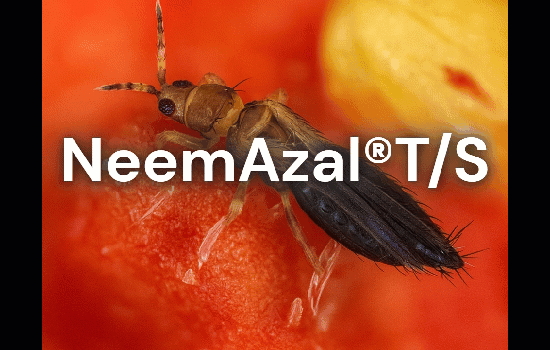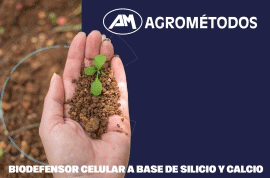This paper is a summary of a more comprehensive document published in May 20081 which presents an analysis of the potential impact of the Commission proposal on ?cut-off criteria? and substitution and an analysis of the amendments proposed by the European Parliament.
The full analysis is presented both in terms of substances affected and the impact on crop protection from their loss. This paper provides a more general assessment of the potential implications of the implementation of the Regulation for crop production in the UK.
INTRODUCCIÓN
Nearly 300 substances have been assessed including the majority of conventional chemicals. Certain substances were not considered because it was anticipated they would not be included in Annex I of Council Directive 91/414/EEC, as the objective of the impact assessment was to consider the impact of the proposed Council Regulation. Some of the impacts are difficult to establish because the criteria are not yet fully defined. This is particularly the case for endocrine disruption.
The Commission proposals could remove up to 15% of the substances assessed, some of which are particularly important in the UK for protection of minor crops such as carrots and parsnips. It is possible that the endocrine disruptor criteria could impact particularly on fungicide availability and might result in 20-30% yield losses in cereals.
The Parliament proposals include a single approval period for candidates for substitution of five years and could result in the loss of up to 85% of conventional chemical substances after that period. If the full potential impact of the current Parliament proposals were realised, conventional commercial agriculture in the UK (and much of the EC) as it is currently practised would not be achievable, with major impacts on crop yield and food quality.
Background
In Annex II to the proposed Council Regulation, the Commission sets out criteria for approval of active substances and candidates for substitution. The impact assessment published by the Commission did not address these criteria.
The Parliament proposed a range of amendments and additions to these criteria. It did not provide an impact assessment for these proposals. Widely different (percentage) figures have been provided by the Commission, the industry and NGOs on the impact of these proposals. These differences appear to depend on the number of substances analysed and the extent to which already established classification, rather than potential for classification, has been applied.
This assessment is intended to provide an indicative assessment of the impact of these proposals on crop protection in the UK. Some of these criteria are not well defined and it is inevitable that, in analysing nearly 20 different criteria for nearly 300 substances, there is scope for different interpretations.
The potential impact in terms of the percentage reductions in available active substances are summarised below.
Commission proposal
Cut-off criteria ? the higher figure includes possible endocrine disruptors:
Insecticides 6 to 10 % not approved (UK 5 to 10%)
Fungicides 8 to 32 % not approved (UK 7 to 35%)
Herbicides 4 to 10 % not approved (UK 5 to 12%)
Overall impact (all plant protection products) 5 to 15% (EC figure)
Candidates for substitution ? percentage of what remains assuming lower figure for losses through non-approval:
Insecticides 38%
Fungicides 20%
Herbicides 24%
Total candidates for substitution 24 % (EC figure)
Parliament proposal
Cut-off criteria ? again, the higher figure includes possible endocrine disruptors:
Insecticides 65% not approved (UK 66%)
Fungicides 31 to 43 % not approved (UK 35 to 49%)
Herbicides 25 to 31 % not approved (UK 27 to 33%)
Overall impact (all ppps) 35 to 40% (EC figure)
Candidates for substitution ? percentage of what remains (approved once only, for five years):
Insecticides 77%
Fungicides 64%
Herbicides 86%
Total candidates for substitution 71% (EC figure)
Overall impact (cut-off criteria or substitution):
Insecticides 92% (from total 62)
Fungicides 80% (from total 83)
Herbicides 91% (from total 113)
Overall impact (all ppps) 82% (EC figure)
Overall impact chemical ppps (excluding micro-organisms) 85% (EC figure)
Implications for conventional crop protection in the UK
Summary
The Commission proposals could remove some substances which are particularly important in the UK for protection of minor crops such as carrots and parsnips. It is possible that the endocrine disruptor criteria could impact particularly on fungicide availability and might result in 20-30% yield losses in cereals.
If the full potential impact of the current Parliament proposals were realised, conventional commercial agriculture in the UK (and much of the EC) as it is currently practised would not be achievable, with major impacts on crop yield and food quality. The proposals would also have very significant impact in amenity and industrial situations where weed control is important.
General issues
Examples of some of the potential implications of the different proposals for substances which are currently available in the UK are given below. However, the breadth and scale of the potential losses of active substances, particularly from the Parliament proposals, are so large that clearly identifying all the potential and significant impacts is not possible without substantial further research. The text below therefore endeavours to provide illustrations of where some of the more significant impacts may be expected. Generally the impacts of specific pests, weeds or diseases are considered. However cumulative impacts would be experienced where fungicides, insecticides and herbicides are no longer available on a particular crop.
These proposals need to be considered against the background of substantial losses of active substances which have already occurred as a result of the EC review programme under Directive 91/414/EEC.
There is also a potentially severe impact on resistance management. Effective resistance management is reliant on having different modes of action (including non-chemical methods) incorporated into strategies to reduce selection pressure and thus minimise the likelihood of resistance development. With reliance on fewer active substances, opportunity for choice is reduced and risk of resistance substantially increased.
Similarly, integrated pest management (IPM) is reliant on having diversity of active substances so, where possible or appropriate, selective or short persistence compounds can be utilised. The scale and magnitude of the potential losses, particularly from the Parliament?s proposals, would undermine both resistance management and IPM. The former could also have implications for pest management on a global scale if resistance strains selected as a result of intensive use of surviving active substances spread from Europe, either directly or via the transport of plant material or food produce.
The analysis conducted does not consider the impact on substances in List 4 of the current EU review programme. This list includes some compounds that can provide a useful contribution to pest control, particularly in the insecticide arena, with substances such as Bacillus thuringiensis, nicotine, fatty acids and pyrethrins. There are also insecticidal substances such as pheromones for moth control and fungi for aphid control. However they generally do not deliver the level, persistence or consistency of control delivered by conventional chemistry. As such they are commonly used in conjunction with conventional chemistry (to ensure populations are reduced sufficiently) or in partnership with biological control agents in protected situations (where control by introduction of parasites and predators can be more reliable due to the more consistent environmental conditions). Whilst an increase in frequency of their use might lead to higher levels of control of some pests, this would lead to increased problems with resistance, present already for many of these substances. In the herbicide and fungicide area, the diversity of List 4 compounds is much more limited, and (with the exception of sulphuric acid widely used for potato haulm desiccation and ethylene as a PGR) they only provide a small contribution to the control of weeds and diseases, or have very specific and limited application.
Implications of the Commission proposals for active substance approval criteria
Specific issues:
- non-approval of the triazole compounds (possible endocrine disruptors) would remove the foundation stone of control programmes for the major disease of wheat in the UK, Septoria tritici, with potential for 20-30% yield losses;
- significant implications for minor crops such as carrots, parsnips and onions because the majority of currently approved herbicides may no longer be available. For weed control the sensitivity of the crop to herbicides means that many active substances may be unsuitable on a particular crop even though they may control the target weed. Potential for up to 100% yield loss ? estimated at £6,600(?8,000)/ha in maincrop carrots.
- pendimethalin is the mainstay (together with flufenacet) of pre-emergence black-grass control in cereals. Black-grass is the major grass weed species in England, and effective black-grass control strategies rely on pre- and postweed emergence sequences of a limited range of key herbicides. The non-approval of the pendimethalin pre-emergence option would jeopardise weed control, leading to yield losses, and would place increased risk of resistance on remaining active substances;
- assuming non-approval of potential endocrine disruptors, the proposals would not leave any fully effective compounds, for any of the major diseases of oilseed rape. Significant yield loss from stem canker and light leaf spot would result;
- loss of warfarin would have significant impact on amenity woodland and forestry, with increased native tree death.
Comprar Revista Phytoma 203 - NOVIEMBRE 2008













